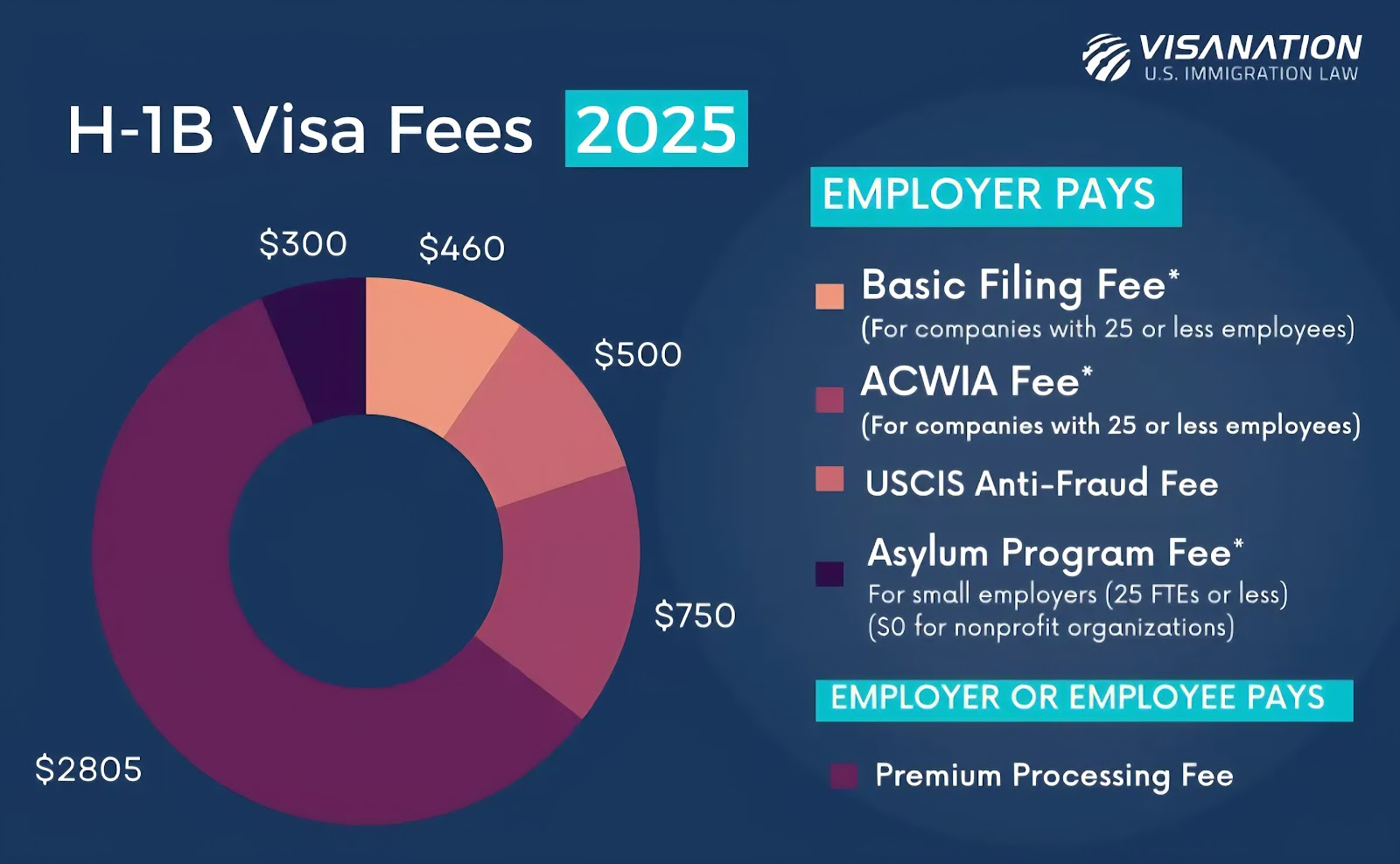 News
News
For many U.S. employers, hiring skilled talent through the H-1B program has become a costly and unpredictable process. Annual caps, rising legal expenses, and frequent policy changes often slow down hiring and limit growth. Instead of navigating these hurdles, more companies are turning to remote nearshore developers as a smarter alternative. Nearshore developers bring strong technical expertise, cultural compatibility, and the benefit of working in similar time zones, making collaboration smooth and efficient. Businesses can scale faster without relocation, sponsorship, or compliance risks, all while reducing overhead costs. This approach is not only about avoiding visa fees, but also helps in building agile, resilient teams that adapt quickly to shifting market demands. Remote nearshore hiring allows companies to stay focused on innovation while maintaining flexibility and speed. As the digital landscape grows more competitive, tapping into global talent without the barriers of traditional visas is becoming less of an option and more of a necessity for long-term success.
Current Issues Employers Are Facing with H-1B Visas
Here are some of the biggest pain points for U.S. employers when trying to hire new employees via H-1B visas and why hiring remote software developers is looking so attractive right now.
→ Annual Caps & Lottery Uncertainty.
There’s a fixed ceiling on how many H-1B visas are granted each fiscal year, and demand far exceeds supply. Employers often waste effort preparing petitions only to lose in the random selection process and because H1B visa cost savings are rarely possible!
→ Costly Fees and Legal Expenses.
The government filing fees, legal counsel, and compliance costs add up quickly. For many employers, especially smaller ones or startups, these expenses are a significant barrier.
→ Complexity and Time Delays.
There is extensive paperwork involved, including demonstrating “specialty occupation,” proving the employer-employee relationship, and showing the ability to pay prevailing wage. Employers also face delays from responding to Requests for Evidence, which slows down the hiring process and increases risk.
→ Policy Instability & Increasing Scrutiny.
Whenever the administration changes, immigration enforcement priorities and regulatory requirements shift. Employers can’t reliably predict what will be required, and stricter documentation checks along with site visits and audits create additional uncertainty.
→ Prevailing Wage and Compliance Risk.
Employers are required to pay foreign workers the prevailing wage for that specific location and occupation. Any mistakes in calculation or documentation can lead to denials, fines, or even disqualification from the program.
→ Long Green Card and Permanent Residency Backlog.
Even after securing an H-1B, many employees from certain countries face years or even decades of waiting for permanent residency. This creates uncertainty for both employers and employees, limiting mobility and making retention more difficult.
→ Higher Upfront Risk & Wasted Effort.
Due to the lottery, strict scrutiny, fraud prevention rules, and detailed documentation requirements, employers often invest time and money into preparing petitions that may not succeed. This leads to wasted effort and resources without any guaranteed payoff.
Benefits Employers Gain When Hiring Developers Without H1B
Hiring remote nearshore developers is more than just a workaround for avoiding H-1B visa costs. It is a strategy that offers businesses a wide range of long-term benefits. Many companies are already realizing that building nearshore teams is not only cost-effective but also operationally efficient, flexible, and sustainable. Below are some of the most valuable advantages employers can gain when they tap into nearshore talent.
Cost Savings Without Compromising Quality.
One of the biggest reasons employers look at nearshore hiring is the significant cost advantage. Nearshore remote software developers, particularly from regions like Latin America, often come with lower hourly rates compared to local U.S. developers, yet they bring the same professional skill set. Companies can redirect these savings into other areas such as product innovation, customer acquisition, or scaling infrastructure. Unlike offshore solutions that sometimes trade quality for affordability, nearshore teams balance competitive pricing with strong expertise and reliable delivery.
Shared Time Zones for Easier Collaboration.
A major challenge with offshore hiring is time zone misalignment. With nearshore developers, most countries share overlapping working hours with the U.S. This makes daily standups, sprint reviews, and problem-solving sessions much smoother. Instead of waiting overnight for responses, teams can collaborate in real time. This accelerates project timelines and reduces delays caused by communication gaps, making nearshore talent a perfect match for agile development.
Strong Technical Skills and Industry Knowledge.
Nearshore regions have heavily invested in building technology hubs and innovation ecosystems. Developers are not only skilled in mainstream technologies such as Java, Python, React, and Node.js, but also increasingly experienced with specialized fields like AI, machine learning, cloud solutions, and cybersecurity. Employers benefit from access to professionals who bring both advanced skills and industry know-how, helping them achieve higher-quality outputs.
Cultural Affinity and Better Communication.
Beyond technical skills, culture plays a major role in collaboration. Nearshore developers typically have a higher cultural alignment with U.S. companies compared to offshore teams in distant regions. This means fewer misunderstandings, smoother communication, and a shared approach to work ethic and problem-solving. Many nearshore professionals are also fluent in English, reducing language barriers and allowing them to integrate seamlessly with existing teams.
Faster Hiring and Onboarding.
Traditional hiring in the U.S. can take months, especially when involving relocation, sponsorships, or visa processes. With nearshore hiring, employers can often find and onboard skilled developers in weeks. Many nearshore partners already maintain vetted talent pools, which makes it easier to quickly match a developer’s skills to the project’s needs. Faster hiring ensures companies remain agile in a competitive market where speed is critical.
Scalability and Flexibility.
Project demands fluctuate. Sometimes you need a large team to push through a critical launch, while at other times a smaller team suffices. Nearshore developers allow employers to scale teams up or down without the long-term obligations tied to permanent in-house staff. This flexibility is especially beneficial for startups and growing businesses that need to adapt quickly to shifting market conditions.
Reduced Compliance and Immigration Concerns.
By hiring nearshore remote software developers, companies avoid the complex compliance landscape of H-1B visas and work permits. This removes the uncertainty of visa lotteries, government delays, and costly legal hurdles. Employers can build global teams without the stress of immigration restrictions, knowing their nearshore hires can work remotely without relocation.
Focus on Core Business Priorities.
Outsourcing certain development functions to nearshore teams frees up in-house staff to focus on higher-value work. Instead of being tied up with coding tasks, the internal team can prioritize strategy, product vision, customer engagement, or business expansion. Employers benefit from greater productivity and sharper focus on long-term objectives.
Improved Employee Retention and Reduced Burnout.
When companies rely too heavily on small in-house teams, employees often face overwork and burnout. Adding nearshore developers helps distribute workloads more evenly, lowering stress on existing staff. This leads to healthier work environments, improved morale, and stronger retention. Employers can maintain steady productivity without putting pressure on a few overextended employees.
Diverse Perspectives and Innovation.
Nearshore developers bring fresh ideas and different problem-solving approaches. This diversity of thought encourages innovation and can lead to more creative product features, better design choices, and stronger user experiences. Employers who tap into nearshore talent gain a competitive edge by leveraging global perspectives that enrich their projects.
Access to Specialized Skills on Demand.
Sometimes projects require niche expertise, whether in blockchain, fintech integrations, or advanced DevOps pipelines. Nearshore markets have developers who specialize in these areas and can be hired on-demand for short-term or long-term projects. This flexibility gives employers access to rare skills without needing to train existing staff or hire permanent employees.
Lower Operational Risks Compared to Offshore.
Unlike distant offshore destinations, nearshore regions are closer both geographically and culturally. This makes site visits, performance evaluations, and team-building activities more manageable. Employers can build stronger relationships with nearshore partners and feel more confident about accountability, quality control, and project management.
Smoother Project Management and Agility.
Because of time zone overlap and cultural compatibility, agile development methodologies such as Scrum or Kanban work more effectively with nearshore teams. Employers can easily implement daily communication, quick feedback loops, and iterative improvements without the time lag often associated with offshore development.
Long-Term Partnerships and Loyalty.
Nearshore developers are often eager to establish long-term collaborations with U.S. companies. Employers benefit from stronger loyalty, lower turnover rates, and the ability to grow teams that understand their business deeply over time. This continuity creates stability and reduces the constant churn associated with freelance or short-term offshore arrangements.
Why You Should Consider Partnering with Blue Coding
Unlike many do believe it, building a strong development team doesn’t have to be complicated. Our team at Blue Coding, we make it simple for businesses to connect with talented nearshore developers who can jump right into your projects and add value from day one. Our developers bring the skills, flexibility, and cultural fit you need without the headaches of visas or long hiring cycles. Think of us as an extension of your team, helping you scale faster and smarter. Want to see how nearshore hiring can work for you? Contact us today and let’s get started with a free discovery call!




